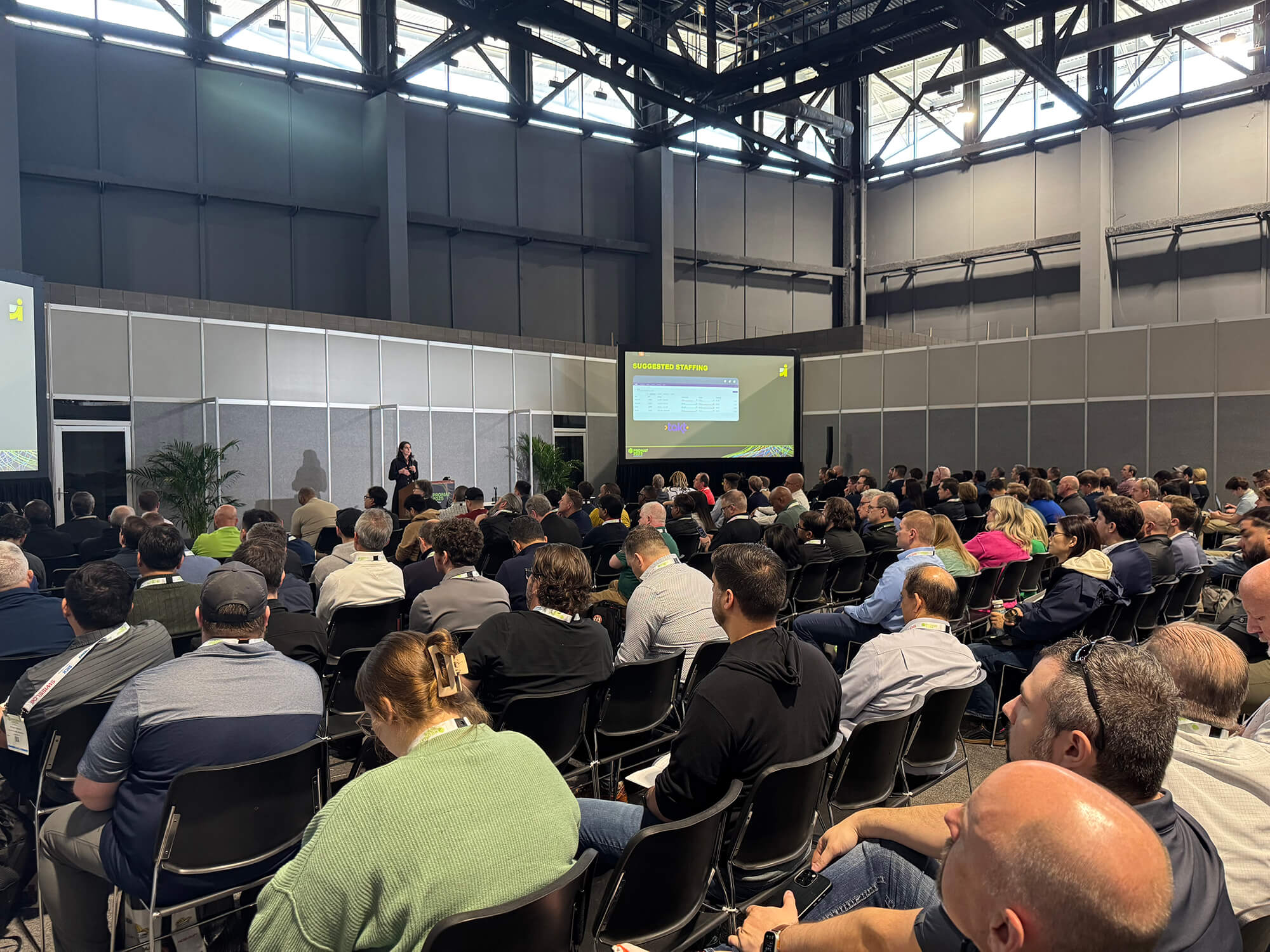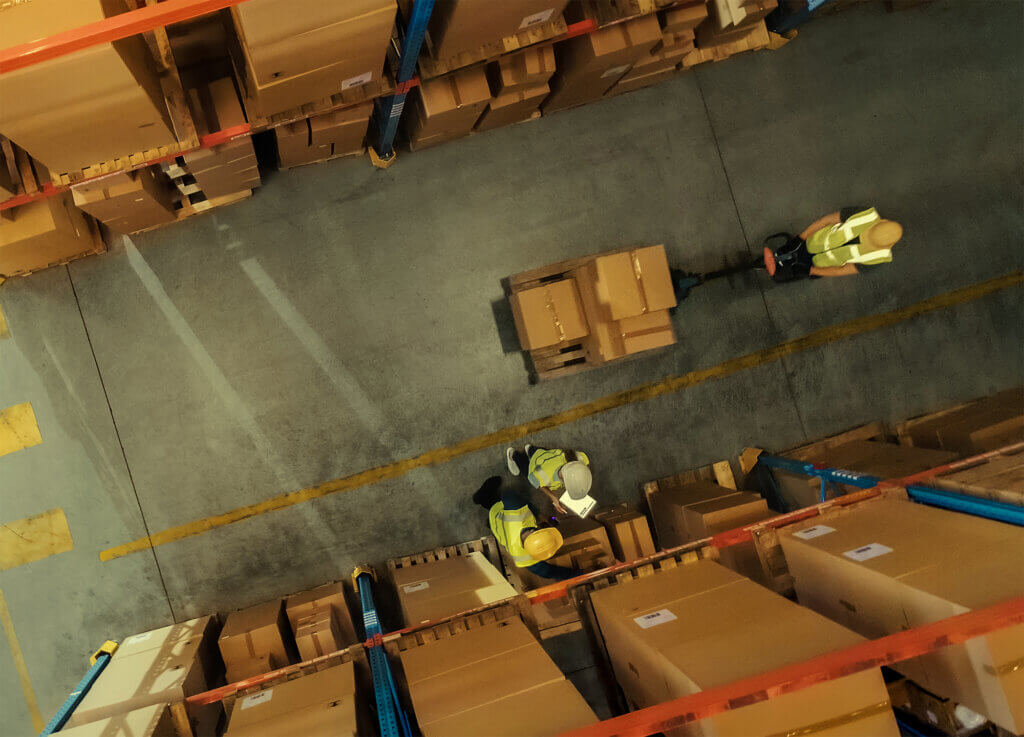Softeon Director of Solutions Consulting Paige Wilkinson delivered a presentation on AI and the Future of Labor Management at ProMat 2025. This blog contains a video snippet of the session and overview of the topic. Softeon partners with Takt on labor management solutions for companies.
AI has taken the world by a storm in recent years, as the technology continues to expand into more and more industries and use-cases. “AI” is an expansive idea, encapsulating techniques that equip computers to emulate human behavior; enabling them to learn, make decisions, recognize patterns, and solve complex problems in a manner similar to human intelligence. While this includes a wide range of technologies and models, here we focus on a few AI types with impressive implications for improving warehouse labor management.
Below are the several types of AI models currently being employed in warehouse labor management, with some examples of what might be the output of these models using traffic.
- Predictive AI: A pure Predictive AI model gives recommendations based on correlations in historical data. For example, given historical patterns of rush hour traffic and weather it could predict how long it would take for you to get to your proposed definition, but it would have no sense of why.
🚦 “Based on traffic patterns, it will take 30 minutes to arrive at your destination.” - Causal AI: A pure Causal AI is going to look for root causes in data without giving predictions for the future, looking specifically for dependency and causality in the data set. For example, what happens to traffic when an accident happens on the freeway? How does this impact our commute?
🚦 “If there is a crash on the freeway, it will take 30 extra minutes to arrive at your destination, or 60 minutes total.” - Predictive + Causal AI: Leaders in the field will typically combine Causal and Predictive AI models to leverage causal information as well as historical information to make predictive assumptions – which is the category in which much of our labor management AI application will fall into today. Keeping with our traffic example, this will leverage both the root cause analysis and historical data to create predictive outcomes. This can then make suggestions to the user for ways to avoid issues, such as using an alternate route given a crash on the freeway.
🚦 “Given that there is a crash on the freeway, using an alternate route would save 15 minutes.” - Generative AI: Then we have Generative, which is close to our ChatGPT structure that everyone thinks of when we say “AI” – that more chatbot function for which the same input will generate a different output each time. In this example, maybe we want to ask it how to frame our traffic delay to a customer and it gives us sample text and recommendations.
🚦 A prompt might be, “What is the best way to tell the customer that I will be late due to traffic?” The model would give a free-text answer. - Computer Vision (Vision AI): Vision is the AI ability to translate visual information into usable data. This is usually used in tandem with one of the previously defined AI structures for recommendations or predictions based on this data. For example, taking camera imagery of volume of cars and speeds on the freeway to set the ideal speed limits along the road, like they do with the German Autobahn.
AI at the Intersection of Labor and Warehouse Execution Systems
Orchestrate human labor with automation leveraging an AI powered warehouse execution system (WES) to get the best of both.
An advanced WES can leverage a combined causal and predictive model to create trends and projections within the warehouse. If all 10 items are staged at the conveyor to the same time, will this back up pack station one. When a team member is gone in replenishment, this reduces efficiency by 20 percent in that department.
A WES in conjunction with AI can also leverage the expectations of the causal and predictive model to automatically create changes within the warehouse environment or suggest changes for supervisor approval based on these expectations. For example, with the expected work created by the orders available in the system, move an employee from picking to replenishment for two hours.
These AI applications can help balance workload between material handling equipment (MHE) and human labor as well as optimize labor through reduced downtime and bottlenecks.
AI in Labor Planning
Automate labor planning and coordination to reduce administrative overhead with AI-powered predictive and causal modeling. This approach leverages historical data and root cause analysis to recommend forward-looking labor plans and support same-day adjustments when needed. By giving warehouse teams the ability to act quickly and intelligently, this helps optimize labor across every shift.
Softeon’s partner Takt specializes in this area. Takt’s advanced system automatically calculates the direct and indirect labor required to meet your quantity or hours targets, ensuring optimal performance and efficiency.
Warehouse teams are under pressure to do more with less—and that’s where Takt comes in. By connecting data from your WMS, time clock, robotics, and indirect labor via our Virtual Kiosk, Takt gives your team the full picture. Our AI-powered assistant, Takt Coach, turns that data into real-time insights and smarter labor plans, helping you unlock performance while building a more engaged, efficient workforce.
Alex Rhea, Co-Founder and CTO, Takt
AI in Employee Performance Reporting
Coach and support human labor effectively with the aid of AI. Leverage predictive and causal AI models to suggest both re-training for areas where employes are falling below target and kudos for high performers. This model can also inform your team as to the impact of performing things like retraining, so your management team can make informed decisions about your workforce.
Generative models can also even give suggested feedback to improve performance communication.
Vision AI alongside warehouse management systems (WMS) can effectively collect data on how employees are performing to feed these models for better outcomes. Vision AI can even be geared towards safety to reduce hazards and improve employee health.
All of this is designed to allow your warehouse management to better support your workforce – leading to happier, safer employees, higher retention, and better performance.
Webinar: AI and The Future of Warehouse Labour Management
Softeon recently teamed up with Supply Chain Logistics Association of Australia (SCLAA) to present on this topic for their members.





